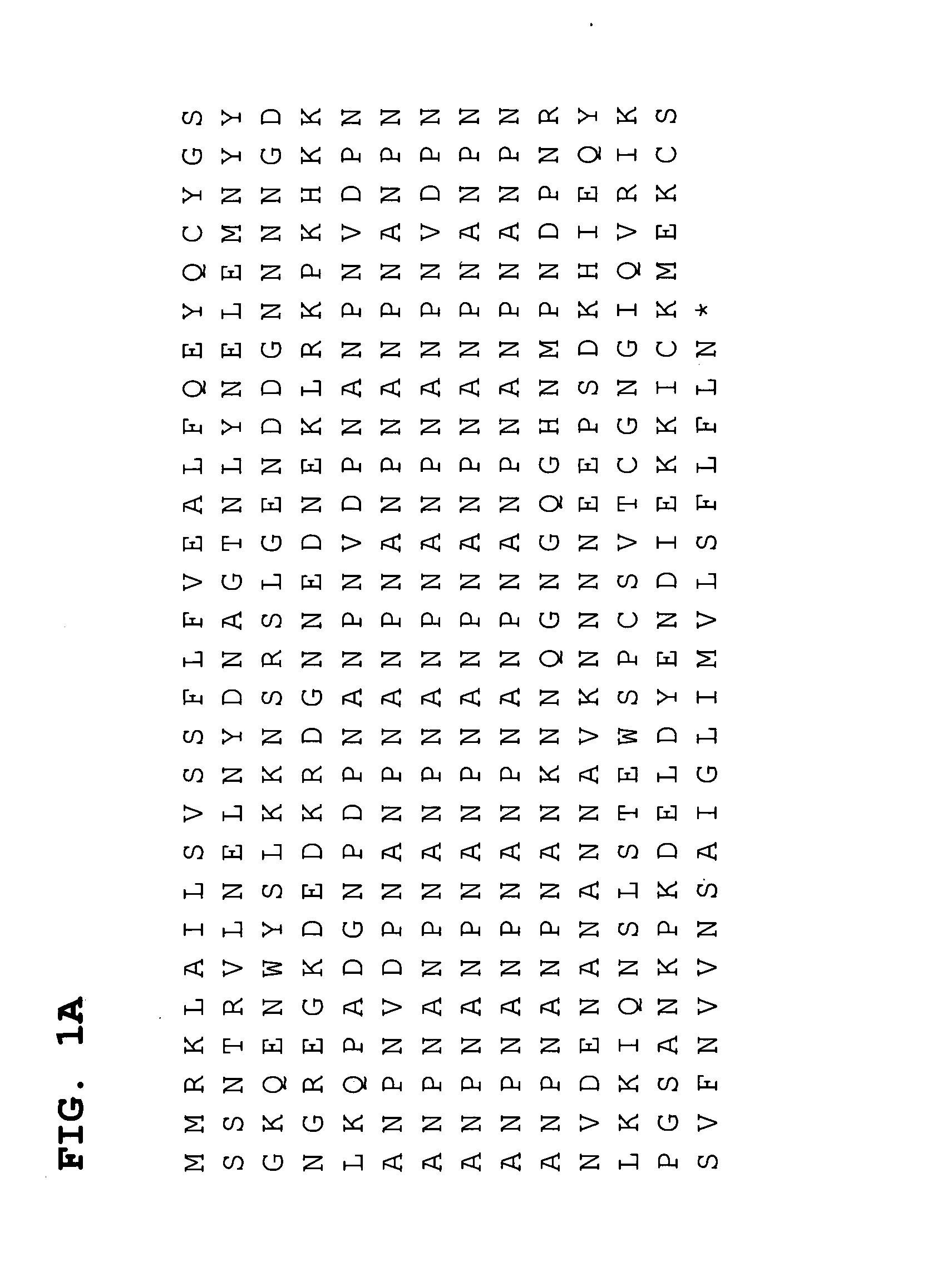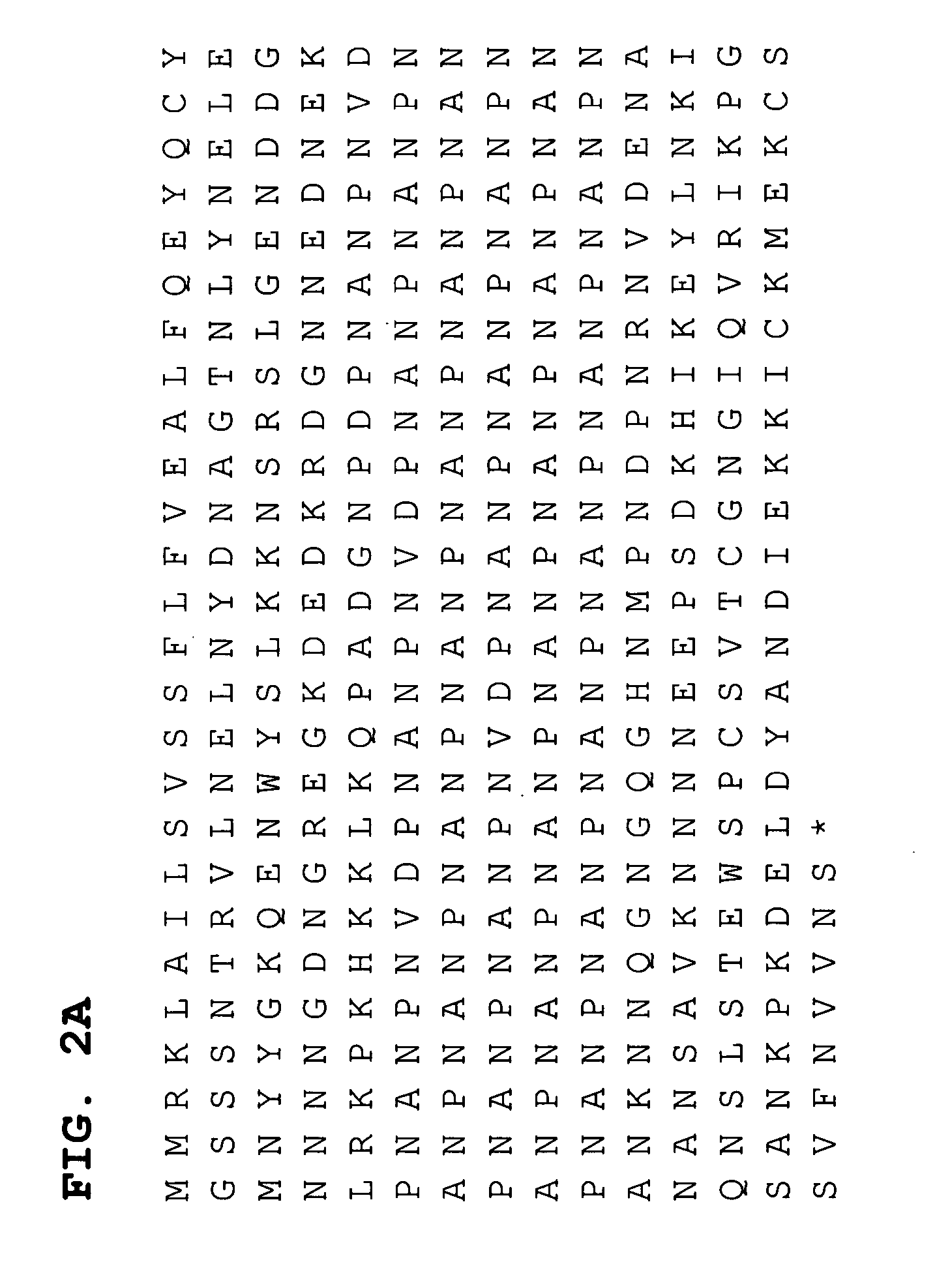Recombinant viral-based malaria vaccines
a technology of recombinant viral and malaria vaccine, applied in the field of medicine and biotechnology, can solve the problems of not protecting the mammalian host, reducing malaria transmission, and lack of a feasible large-scale culture system
- Summary
- Abstract
- Description
- Claims
- Application Information
AI Technical Summary
Problems solved by technology
Method used
Image
Examples
example 1
Assembly of the Plasmodium falciparum Circumsporozoite Synthetic Gene
[0046] Comparative studies conducted with DNA vaccines based on native and codon-optimized genes encoding merozoite proteins of P. falciparum have indicated a direct correlation with expression levels and immunogenicity (Narum et al. 2001). A new sequence of the gene encoding the Plasmodium falciparum circumsporozoite (CS) protein was designed. Studies on populations of malaria parasites obtained from widely separated geographical regions have revealed the presence of CS sequence polymorphism. The new P. falciparum CS sequence was assembled by alignment of the different available protein sequences present in the GeneBank database (listed in Table I). First, all the different sequences were placed in order of subgroups based on global location or by lab strain where the isolates originated. All CS complete or partial sequences were used in order to identify variation between the different geographical areas and ide...
example 2
Codon Optimization of the Circumsporozoite Gene of the Rodent-Specific Malaria Parasite Plasmodium yoelii
[0059] Malaria species that have been adapted to robust rodent models, such as P. berghei and P. yoelii, have been powerful tools for identification and testing of malaria candidate vaccines. Since infectivity of P. yoelii sporozoites resembles that of P. falciparum, it was decided to make use of the P. yoelii model for exemplification of the capability of Ad35 vectors carrying codon-optimized CS proteins to provide sterile immunity and, therefore, protection against malaria infection. The P. yoelii CS gene, encoding for residues 1-356 as previously described (Rodrigues et al. 1997), was codon optimized using the same provisions as described above and synthesized by GeneArt (GmbH-Regensburg, Germany). The sequence of the codon-optimized P. yoelii CS gene (plasmid 02-149) is depicted in FIG. 3.
example 3
Generation of Recombinant Adenoviral Vectors Based on Ad5
[0060] RCA-free recombinant adenoviruses can be generated very efficiently using adapter plasmids, such as pAdApt, and adenovirus plasmid backbones, such as pWE / Ad.AflII-rITRsp. Methods and tools have been described extensively elsewhere (WO 97 / 00326, WO 99 / 55132, WO 99 / 64582, WO 00 / 70071, WO 00 / 03029). Generally, the adapter plasmid containing the transgene of interest in the desired expression cassette is digested with suitable enzymes to free the recombinant adenovirus sequences from the plasmid vector backbone. Similarly, the adenoviral complementation plasmid pWE / Ad.AflII-rITRsp is digested with suitable enzymes to free the adenovirus sequences from the vector plasmid DNA.
[0061] The cloning of the gene encoding the CS protein from P. yoelii parasite into pIPspAdapt1 was performed as follows. Plasmid 02-149 (GeneArt, see above) containing the codon-optimized CS gene was digested with HindIII and BamHI restriction enzymes...
PUM
| Property | Measurement | Unit |
|---|---|---|
| elongation time | aaaaa | aaaaa |
| annealing temperature | aaaaa | aaaaa |
| volume | aaaaa | aaaaa |
Abstract
Description
Claims
Application Information
 Login to View More
Login to View More - R&D
- Intellectual Property
- Life Sciences
- Materials
- Tech Scout
- Unparalleled Data Quality
- Higher Quality Content
- 60% Fewer Hallucinations
Browse by: Latest US Patents, China's latest patents, Technical Efficacy Thesaurus, Application Domain, Technology Topic, Popular Technical Reports.
© 2025 PatSnap. All rights reserved.Legal|Privacy policy|Modern Slavery Act Transparency Statement|Sitemap|About US| Contact US: help@patsnap.com



